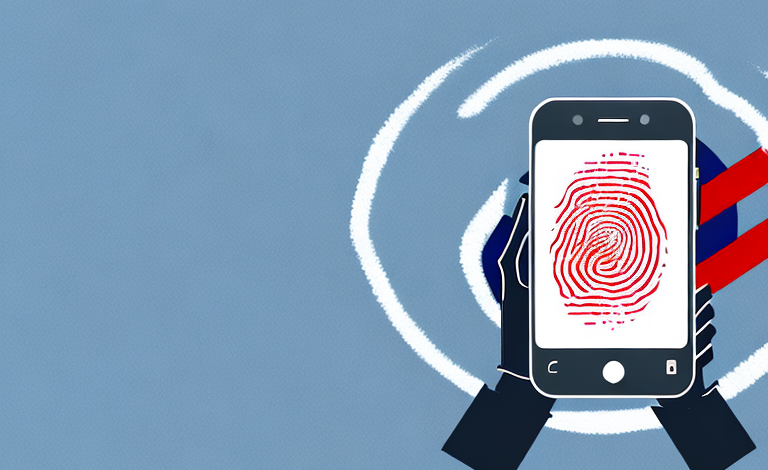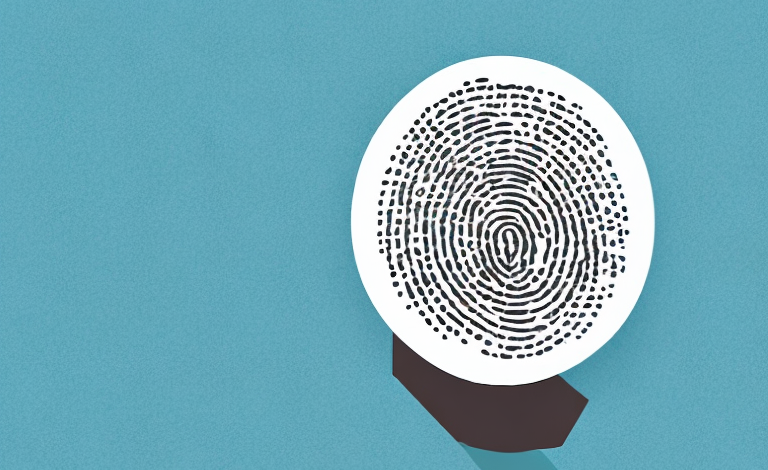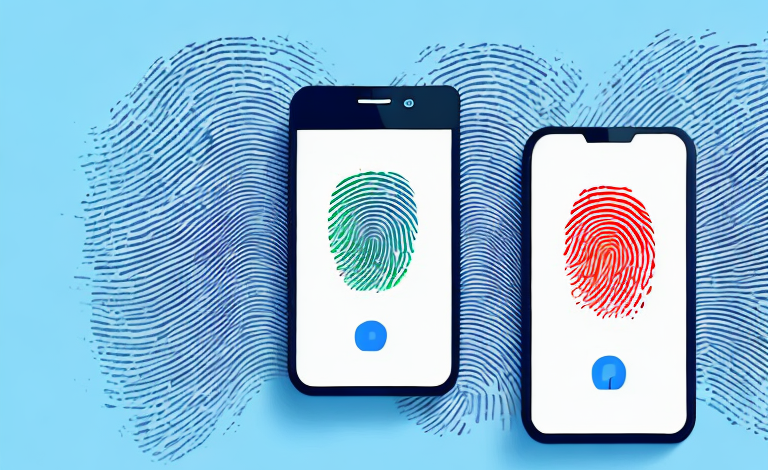Fingerprint locks have become increasingly popular in recent years due to their convenience and security. However, just like any other mechanical or electronic device, fingerprint locks can sometimes fail to work, causing frustration and anxiety for users. In this article, we will explore the most common reasons why fingerprint locks fail and provide practical troubleshooting tips to help you solve the problem.
Understanding how fingerprint locks work
Before we delve into the potential reasons for failure, it’s essential to understand how fingerprint locks work. Fingerprint locks use biometric technology to scan and match the unique patterns of your fingerprint with a stored database. This technology provides high-security access control to your property and eliminates the need for physical keys. The sensor of the lock reads the ridges and valleys of your fingerprints, and the lock stores the unique pattern in its database. When you place your finger on the sensor, the lock matches your fingerprints with the stored data and unlocks the door if there is a match.
One of the significant advantages of fingerprint locks is that they offer a high level of convenience. With a fingerprint lock, you don’t have to worry about losing your keys or forgetting your password. You can access your property with just a touch of your finger. Additionally, fingerprint locks are more secure than traditional locks because they are difficult to pick or tamper with.
However, fingerprint locks are not foolproof, and they can fail for various reasons. For example, if the sensor of the lock is dirty or damaged, it may not be able to read your fingerprint correctly. Similarly, if you have a cut or a wound on your finger, the lock may not recognize your fingerprint. It’s also possible for someone to replicate your fingerprint and gain unauthorized access to your property. Therefore, it’s essential to choose a high-quality fingerprint lock and take appropriate security measures to protect your property.
Common reasons why fingerprint locks fail
There are several reasons why fingerprint locks may fail to recognize your fingerprint or unlock the door. The most common among them include:
- Fingerprint not enrolled: If you have recently installed the lock, it’s essential to enroll your fingerprint in the lock’s database. Failure to do so will result in the lock not recognizing your fingerprint and failing to unlock.
- Damaged sensor: The sensor of the lock may become damaged, scratched, or dirty, preventing it from reading your fingerprint correctly.
- Low quality or partial fingerprint: If your fingerprint is low quality or incomplete, the lock may not recognize it, resulting in failure to unlock.
- Dead battery: If the lock uses batteries to power the scanner or the device itself, a dead battery will prevent the lock from functioning correctly.
- Misaligned lock: If the lock’s components are misaligned, the scanner may not line up with your fingerprint properly, causing failure to unlock.
- Software malfunction: Your fingerprint lock’s software may experience malfunctions, causing your lock to fail to recognize your fingerprint correctly.
It’s important to note that environmental factors can also affect the performance of fingerprint locks. For example, extreme temperatures, humidity, or direct sunlight can cause the sensor to malfunction. Additionally, if your hands are wet or dirty, the lock may not recognize your fingerprint correctly. It’s essential to keep the sensor clean and dry and avoid exposing it to extreme conditions to ensure optimal performance.
How to troubleshoot your fingerprint lock
If your fingerprint lock isn’t working, the first step in troubleshooting is to determine the cause of the issue. Here are some steps you can take to troubleshoot your lock:
- Check battery: Ensure that batteries are charged, and the lock is connected to a power source.
- Re-enroll your fingerprint: Try enrolling your fingerprint again to ensure that the lock’s sensor has your current fingerprint data.
- Clean the scanner: Clean the scanner with a soft cloth to remove any dirt, dust or smudges that may prevent the scanner from functioning correctly.
- Relocate lock: If the lock’s components are not aligned correctly, try to reposition the lock in alignment.
- Contact manufacturer: If you have tried all these steps and your lock still isn’t working, contact the manufacturer’s technical support for assistance.
It is important to note that some fingerprint locks may not work properly in extreme temperatures. If you live in an area with extreme heat or cold, try to keep the lock in a temperature-controlled environment to prevent any malfunctions.
Additionally, if you have recently updated your phone’s operating system, it may affect the compatibility of your fingerprint lock. Check with the manufacturer to see if there are any updates or patches available to ensure that your lock is compatible with your phone’s operating system.
Steps to take if your fingerprint lock still isn’t working
If none of the troubleshooting tips above worked, there are several steps you can take if your fingerprint lock still isn’t working. First, determine if the lock’s warranty covers repairs or replacement, and if so, contact the manufacturer or your supplier to discuss repair or replacement options. You may also consider having a professional locksmith or a technician verify that the lock is installed correctly and troubleshoot any issues.
Another option is to try resetting the lock to its default settings. This can usually be done by pressing and holding a specific button or combination of buttons on the lock for a certain amount of time. Refer to the lock’s manual or contact the manufacturer for specific instructions on how to reset the lock. If all else fails, you may need to consider replacing the lock with a new one that is compatible with your system and meets your security needs.
When to seek professional help for your fingerprint lock
If you have attempted troubleshooting steps, and the lock still isn’t working, or you’re not confident about handling the issue, consider seeking professional help. A locksmith or a technician with expertise in biometric locks can quickly diagnose the issue and provide appropriate solutions.
It’s also important to seek professional help if you suspect that your fingerprint lock has been compromised or hacked. A professional can assess the security of your lock and recommend any necessary upgrades or replacements to ensure the safety of your property. Additionally, if you are experiencing any unusual behavior from your lock, such as repeated lockouts or error messages, it’s best to consult a professional to prevent any potential security breaches.
Tips for maintaining your fingerprint lock to prevent future issues
Like any other lock, fingerprint locks require proper maintenance to ensure that they work correctly and that you get the best use of them. Here are some tips you should keep in mind:
- Regular cleaning: Clean the scanner regularly with a soft cloth to remove dirt, dust, or smudges that may prevent it from functioning correctly.
- Battery replacement: Replace the batteries regularly, as instructed by the manufacturer.
- Avoid exposure to extreme temperatures: Keep the lock in a cool, dry place and, if needed, protect it from exposure to extreme temperatures or humid environments.
Update the firmware: It is important to keep your fingerprint lock updated with the latest firmware to ensure that it is functioning correctly and to prevent any security vulnerabilities. Check the manufacturer’s website regularly for any firmware updates and follow the instructions to install them.
Other types of biometric locks to consider as alternatives
If you are still experiencing issues with your fingerprint lock or consider different options, there are other types of biometric locks to consider. Facial recognition locks, retinal scanners, and voice recognition locks are just a few examples of biometric locks available in the market. Each has its advantages and disadvantages, so do your research before making a purchase.
Facial recognition locks use advanced algorithms to identify a person’s unique facial features and grant access. They are convenient and easy to use, as they do not require physical contact with the lock. However, they may not work well in low light conditions or if the person’s face is partially covered.
Retinal scanners use infrared technology to scan the blood vessels in a person’s eye to verify their identity. They are highly accurate and secure, but can be expensive and may require the user to remove their contact lenses or glasses before scanning.
Comparing the pros and cons of fingerprint locks vs traditional locks
While fingerprint locks are becoming more popular, there are pros and cons to weigh against traditional lock methods. Traditional locks use keys, which are easy to lose or duplicate, and no biometric scanner fuels them. However, traditional lock methods are well known, and a key doesn’t expire as batteries do, meaning much less maintenance is necessary. Weigh the pros and cons to determine your best option.
One advantage of fingerprint locks is that they provide a higher level of security. Unlike traditional locks, which can be picked or bumped, fingerprint locks require a unique biometric identifier to unlock. Additionally, fingerprint locks can be programmed to only allow certain individuals access, making it easier to control who enters a space. However, fingerprint locks can be more expensive than traditional locks, and they may not work as well for individuals with certain medical conditions that affect their fingerprints.
How to choose the right fingerprint lock for your needs and budget
Finally, choosing the right fingerprint lock involves considering several factors such as the level of security and the lock’s brand, compatibility with other smart devices such as Google Home or Amazon Alexa, and the unit’s durability. Fingerprint locks can range from inexpensive to costly, so determine your budget before making a purchase.
In conclusion, fingerprint locks can be an exceptional form of security, but failures in the biometric scanner can be frustrating. Understanding the causes of failure and how to troubleshoot these devices can help you properly maintain them and keep your security in place.
Another important factor to consider when choosing a fingerprint lock is the number of users that will be accessing the lock. Some locks have a limited number of users that can be registered, while others can accommodate a larger number of users. If you have a large family or multiple people who need access to the lock, it’s important to choose a lock that can accommodate everyone.



